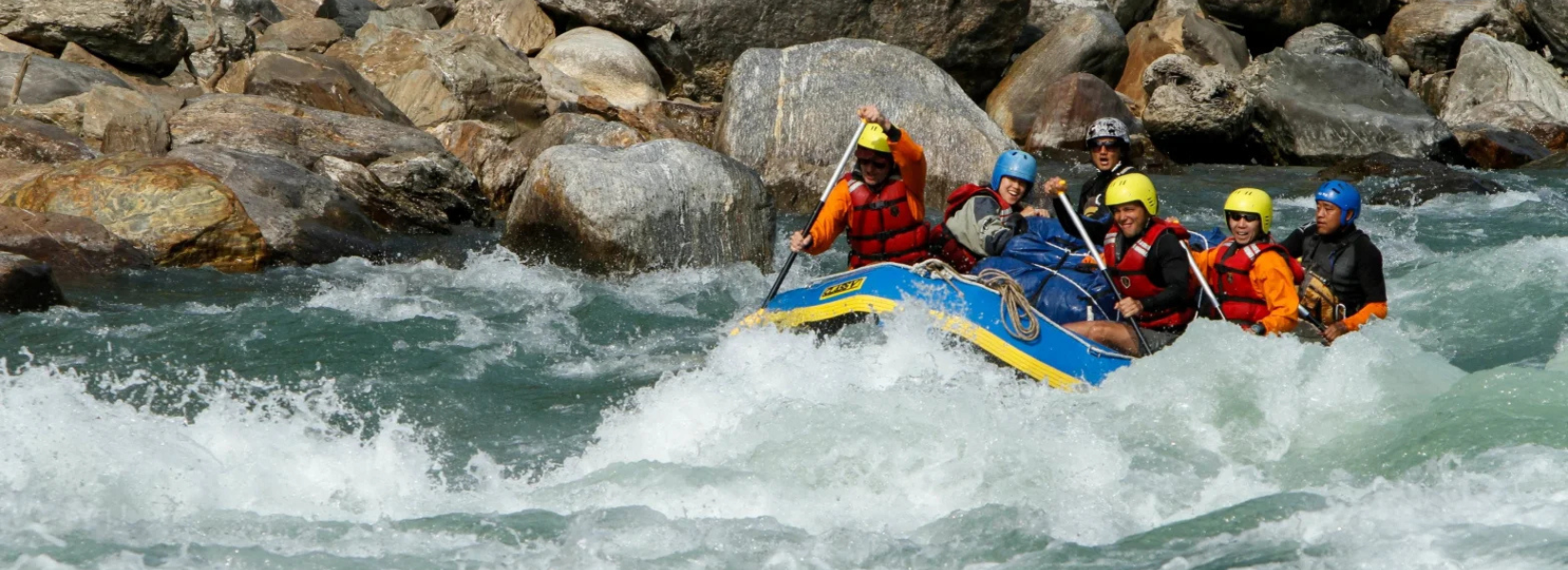About Tamur River Rafting
Tamur River Rafting is located in the eastern part of Nepal that offers an exciting experience for rafting enthusiasts, with its challenging rapids and breathtaking scenery. This river is known for its diverse landscapes, the river flows through lush forests, picturesque valleys, and remote villages of eastern Nepal that provides a unique blend of adventure and natural beauty. Rafting on the Tamur River involves navigating through grade III to grade V rapids, making it suitable for both experienced rafters and adventurous beginners with guidance. The journey down the river is a thrilling ride, with rapids like “The Jhilmila” and “The Dead Men’s Drop” adding to the excitement.
Along the way, rafters are treated to views of snow-capped peaks, pristine wilderness, and the chance to spot wildlife. The Tamur River Rafting experience is not only a rush of adrenaline but also an opportunity to immerse oneself in the serene and rugged landscapes of the region. It is perfect for those rafters who are seeking for adventure and something a little different from the rivers of Nepal. While rafting in this river, it is certain that, you will sure to get splashed on this once-in-a-lifetime thrill ride. It is one of Nepal’s most exciting and remote rivers that are originated from the World’s 3rd highest peak “Mt Kanchenjunga”.
Rafting in the Tamur River is a multi-adventure experience where floating along this river will be exciting experience for a lifetime. Dovan is the starting point of the Tamur River Rafting, but to reach out the Dovan, we have to do trek for the 4 days and then we will be ready for this exciting river rafting. The journey will be unforgettable while hiking with natural beauty and mesmerizing views of Mt Kanchenjunga. After hiking, we will put in the river that let us glimpse a charming valley, thrilling rapids, relaxing currents, and inviting beaches.
Tamur River Rafting Grades
The Tamur River is known for its thrilling white-water rafting, offers a variety of rapids, making it suitable for intermediate to advanced rafters. The rafting grades along the Tamur River ranging from Grade III to Grade V depending on the water level and seasonal variations.
Grade III (Moderate): These rapids are characterized by medium waves, some rough water and occasional obstacles. This grade is doable with some previous rafting experience but is generally manageable for those with basic skills.
Grade IV (Advance): It has more challenging rapids with powerful currents, larger waves, and potentially dangerous obstacles. Rafting in this grade demands experience and the ability to handle intense white-water.
During the monsoon season, water levels rise, this can push some sections into Grade V (Extreme), requiring expert-level skills and significant safety precautions.
For most rafting expeditions on the Tamur River, the journey includes a mix of both challenging and easier sections, making it an exciting option for those looking for a range of experiences.
